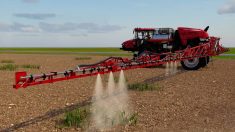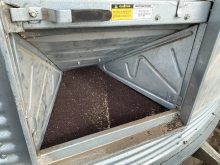Some of us in the agriculture and food business like to amuse ourselves about the naiveté of city folks who have no clue where their food comes from. We chortle when they seem to assume that food magically appears at the local grocery store. As amusing as that may seem, those assumptions may be close to the truth, if a recent decision by the Calgary city council is any indication.
In its recent budget, seemingly serious Calgary city councillors approved the expenditure of $72,000 on a study to find out where their food comes from. The study is to find out who grows it, where it is produced, who distributes it to consumers and where the waste goes.
Read Also

Farm equipment sales sector sees significant structural changes
Farming equipment sales have been declining for a number of years now, and one industry professional believes structural changes in the industry are needed to curb that trend.
At first glance it would confirm the suspicion that city folks are indeed clueless about where their food comes from, if a study has to be launched to get this information. I expect a lot of less-naive taxpayers will probably be either insulted or outraged that their tax dollars are being spent on what seems obvious and for what possible purpose.
For the agriculture and food industries it does raise questions as to the perception (or lack thereof) that consumers have of the role of farmers, ranchers and processors in the food chain. One does ponder the value of the millions that have been spent over the past years by the Alberta government, commodity organizations and food retailers on promoting the role of primary agriculture producers in food production to urban consumers. It would seem none of that message reached Calgary city councillors who remain mystified as to the origin of food.
The study goes by the grandiose title of “Food System Assessment and Action Plan.” The goal appears to be to find gaps and make recommendations to create a sustainable food system in Calgary. A further goal seems to be to ensure that all Calgarians have access to healthy, affordable food. What noble goals they are, except that there is no food access problem by city folks, and there already is a sustainable food system in Calgary, in Alberta, in Canada and in North America.
Even naive city folks are aware that any number of local grocery stores are groaning with an abundance of food. All they have to do is choose where they want to shop, and how much they want to buy. The only access delay is at the checkout counter. You would have to go back almost 100 years to find a situation where access to food was a problem, and that was more a problem of variety and logistics.
So what gives with this study? In websites related to the folks involved with the study one finds references to “healthy, affordable food,” “access to quality, nutritious food,” “local food and farmers’ markets.” These are all coded references to organic food. They imply that the food that is abundant and easily accessed at the large grocery chains is just not what people need, further implying that it is not nutritious and healthy. Nothing could be further from the truth.
The study itself appears to have been instigated by the Calgary Food Committee who influenced the Calgary city office of sustainability which is where the taxpayer money seems to be coming from. The food committee members include folks from academia, a local organic farmer, a number of people in communications, a green lobby group member, an organic food store representative and one lonely member from Alberta Agriculture.
The committee does not have a single representative from the people who actually bring food to the consumer’s table — the commercial farming and ranching industry, meat packers, food processors and of course nobody from the grocery store chains. Does this not cause one to suspect the motives of this committee and the real intention of the study?
The study’s outcome would seem to be predictable — more farmers’ markets, more local organic food production and probably more garden plots for city gardeners. No problem with those goals, but let the free market provide that if there is a demand for those products and services. But I suspect the study will go further and will probably suggest some subsidy mechanism to increase the availability of organic food at lower prices than regular food. More promotion of local organic food markets is also likely.
I can’t help but suspect that this is just another trendy concept that other cities have delved in as part of political correctness. It reminds one of the trend in the 1970s for politically progressive cities to declare themselves nuclear-free zones. Sounds good but of no real consequence.
I expect this study will be relegated to gathering dust on a shelf, but perhaps it should be seen as a message to the agriculture industry that despite all their public relations efforts, the perception gap between urban consumers and those that produce their food may be as wide as ever.














